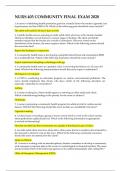Samenvatting
The Life of Texts ch. 5 summary
- Instelling
- Universiteit Utrecht (UU)
- Boek
- The Life of Texts
This is a summary of The Life of Texts chapter 5, divided into clear sections. The most important terms are all included in this summary.
[Meer zien]














